Life with the LessLoss Blackbodys.
|
Life with the LessLoss Blackbodys.
|
|
But as good as the DFPCs were, they did not equal the incredible bass, dynamics and the harmonic beauty of the much more expensive Bybee Super Effect Golden Goddess AC cords I was using at the time (nor should they). At $595, the DFPC’s are geared toward price/performance rather than the state-of-the-art. Back in ’08, I also had the chance to hear the newly developed LessLoss Signature AC cords and Firewall AC conditioner. Unfortunately, though more expensive, they could not render the low-end finesse and dynamics of the Bybee AC cords and AC conditioner either. Now, LessLoss’s president, Louis Motek, is quite the affable chap. Young and engaging, Motek is fully confident in his product line and consequently didn’t much enjoy my candidness. He has since shied away from offering me opportunities to audition any of his newer products. Can’t much blame him. I really wanted to like his products. The first time I heard the LessLoss Blackbodies was during the High End 2010 Show in Munich, when I visited the home of Rainer Weber, designer of the Kaiser Kawero loudspeaker. Upon my first visit the year before, the room sounded absolutely wonderful. This specially designed room demonstrated the levels of excellence in soundstage and dimensionality that can be achieved when designing a room from the ground up. The sense of space and detail was very impressive considering how small the Kawero’s are. On my second visit however, I was very disappointed in the changes in the system. It suffered from hardness and bleached-out harmonics that made music difficult to listen to. Rainer boasted how great the improvement was with the installation of numerous LessLoss Blackbodies. Ah ha, I thought, they could perhaps be the reason things don’t sound good. And I said to Rainer, “I don’t think they’re working in this room.” He nodded as if he understood. However, I was not invited back there either! What a sensitive bunch. I too have enjoyed the successes of tweaks introduced over the years into my system. From Franck Tchang’s little resonators to the very impressive NOVUM I recently reviewed here. Many have also become quite fond of the Stein Harmonizers and Stones (reviewed here). When Russell Lichter waxed poetic over the improvements wrought by the addition of the LessLoss Blackbodys I was stunned at his very high praise of these strange black boxes especially after my experience in Germany. I trust Russell emphatically enough to immediately drop Motek an email asking for another opportunity at this product (guessing the culprit may not have been the Blackbodys back there in Germany). Motek, I sensed a little hesitant, stated they were backordered. Over and again, he continually apologized month after month about either being back-ordered and/or low on stock. I couldn’t very much blame Motek for placing me at the end of the list considering my less than stellar experience with his products. FINALLY, at about the six month mark, Motek informed me that three LessLoss Blackbodys were about to be shipped via FedEx.
Upon their arrival via some very nice double-boxed packaging, I was taken aback by the sheer heft of these shiny black boxes. As Russell indicated in his excellent review, placement can be an issue as distance on my equipment rack became instantly problematic when dealing with a standard equipment rack. I simply placed a single Blackbody right on the top of the new Laufer Teknik Memory Player 64 (over its power supply). With respect to the remaining pair, I was able to get a distance of 6″ directly behind the AC inputs of a pair of Behold BPA768 amplifiers which rests close to the floor atop Halcyonic Silencers active isolation platforms. In addition to distance, the Blackbodys I’m told are also directional so knowing the front from the rear is important to mention as well. The small BLACKBODY logo indicates its face while the alphanumerical lettering points at the rear of the device. All were placed with their fronts facing the components as per Motek’s recommendation.
Another illuminating feature of Shirley Horn is her playing style on piano. She’s mastered the art of “silence” between the notes that seems to make time stand still. And it was right there in that eerie black silence where I heard what the Blackbodys were actually doing. The bass possessed more snap and sounded crispier without the adherent hardness or loss of weight and body. This lends to a more natural roundness to the human voice that tube aficionados crave. The stop and start of strings possessed less artifacts which in turn reveal a truer more vivid presentation of this already amazing recording. The Blackbodys imbues a new meaning to the term fluidity in motion. The music somehow comes through with a new sense of harmonic wholesomeness I had not experienced from no other tweak. To think a device that is not connected to any electrical outlet and is designed to rest near a component and can command this level of change is scary. I sat in amazement for hours listening into the wee hours of the morning. Most of that time was spent with me just shaking my head while enjoying dozens of my favorite recordings. Location, location. Location. Taking the Blackbodys off the amplifiers and placing them right behind my Sunny Technology horn loudspeakers (nearest the internal crossover section) actually impacted the overall sound even further. It’s hard attempting to describe the feeling I got upon first listen that my beloved Sunny loudspeaker’s internal crossovers lost some of their restrictive qualities that unfortunately impedes the music’s delicate ebb and flow. The increase in dynamics, ease and an improved sense of PRaT (Pace, rhythm and Timing) was noticeable in ways I still find hard to comprehend. I’m convinced that perhaps the crossovers inside most loudspeakers can be more susceptible to EMI/RFI distortions than we might ever believe possible. This is the importance of keeping an open mind to products like the Blackbodys despite how wacky it may appear. I couldn’t wait to take the Blackbodys out to other audiophiles, and tweakerholics who would rejoice if they too could get similar results. The first person I had in mind works with Ben Piazza of Shakti (the guys who manufacture the Shakti Stones and Halographs) and his name is David Kaplan. Shakti products have been around for years and have demonstrated to work in many systems all over the globe. I too still own Stones and Halographs even after all these years. When I informed Kaplan about the tweaks I had, I was of course invited over for a session. Nothing like having a shootout against a noteworthy product. Upon my arrival to his home located in downtown Brooklyn NY, Kaplan too was impressed by the build quality of the Blackbodys and found them to be substantial in build but gave our a healthy “YIKES!” when the price was mentioned. I recommended he place them around his digital rig (PS Audio’s newest transport and DAC combo and his amplifier which I think was a Berning). Knowing what to expect from passive devices such as the Shakti Stones, I noticed Kaplan expected to hear something positive. What he didn’t expect was anything this powerful and resoundingly obvious. The look on his face within seconds of playing a familiar track was all I needed to know about the Blackbodys’ effectiveness here in this highly tweaked setup. Kaplan uses an old pair of Apogee Duets loudspeakers and has a tendency to play them louder and beyond what I would think they’re designed for. Yet, with the Blackbodys in place, the sense of sounding loud was diminished enough to cause him to say “what the f*%@ is going on?” I in turn, felt a sense of relief because the system didn’t sound as stressed as he often takes it to. Bass sounded quicker and lower than it had any right to be via this old pair of Duets. Okay, if the Blackbodys can do this to Dave Kaplan’s system, what can it do for pair of $45k Dynaudio loudspeakers hooked up to Behold electronics and also employs the newest Memory Player 64? I took three Blackbodys over to the home of fellow ST contributor and fellow Behold owner Dan Secula. Again, without a warning, I just invited myself there for a listening session one afternoon and pulled out the Blackbodys…. The results were impactful enough to have Dan report on his findings below (Moreno Mitchell who also was smitten by Sunny/Behold combo has illuminating comments on the Blackbodys following Dan’s). My only caveat about the LessLoss Blackbodys is their hefty price tag. A single Blackbody now retails for $1323.00. Worse, they’re very addictive. You’ll want one for each loudspeaker and/or component in your system. Fortunately, I found my most optimum location was at the loudspeakers crossovers first and the digital components second and AC conditioner third. That said, a set of three is really ideal. Anything after that will give you added improvements but not as impactful as that first listen. LessLoss does offer a package savings if you choose to purchase more than one. As usual, they do also offer a try before you buy policy as well. I feel LessLoss has acquitted itself quite well with the introduction of the Blackbodys Conclusion As good as all the other tweaks, mentioned here, are to some degree they’re all additive in their basis of operation. Meaning, they actually add to whatever the signal or system seems to lack. The resonators add harmonic weight and color. The Steins add dimensionality and also seem to give greater insights into the music. The Blackbodys on the other hand appear to be subtractive in character. Lots of noises and distortions are diminished by their mere proximity to a component. Hence, they impart purer tones and harmonics: qualities the single-ended lovers and vinyl enthusiasts claim their wares are most prolific at, while hitherto was near impossible to yield from solid-state and digital devices. I’ve always been of the conviction that one can achieve audio nirvana by merely by keeping an open mind and a tight wallet. You do not have to own the best of everything in order to achieve state of the art performance. The LessLoss Blackbodys are a testimony to that. Though not cheap they do as advertised and have taken my listening pleasure to a level I could not have believed prior to their installation. Products like the LessLoss Blackbodys will certainly challenge many belief systems. But at the same time, once you get a grasp of its power, it will challenge everything you thought you previously knew regarding noises and other contaminations in and around components. Trust me, I was once a Doubting Thomas too. If you’re looking to upgrade to another amplifier or loudspeaker system, please take a listen to your system via a set of LessLoss Blackbodys first. You just might thank me!
clement perry
What did the Blackbodies do for my sound? I listen to an eclectic body of music but if pressed I lean toward classical, jazz, and opera. Once the Blackbodies were finally placed next to my components for optimum effect I could hear my recordings through a cleaner “audio window.” Voices floated in space with more reality, there was less digital hardness, and there was a sense of being closer to the original event, more dimensionality, and most importantly, a greater sense of “being there.” My sound now has much more of a satisfaction factor with the three Blackbodies in my system. When I made a direct listening comparison between having them in and out of my system, the experience was a no brainer. For me, it was a reality check. Once I heard how they appeared to supercharge my components’ virtues I realized I couldn’t listen without them in my system anymore! I am a happy, happy camper with this new tweak. Starting with one will certainly pay dividends. Depending on your resources, adding more will increase the effect as it did for me.
This is a tweak that doesn’t come cheaply. On their site LessLoss shows their pricing structure dependent on number purchased. Buying just one will set you back $1323.00. I am very pleased with the three currently in my system and may even add another. Once you have discovered your component’s sweet spot best suited for the Blackbodys placement, you won’t have to listen very long before you too have reached that wonderful but elusive place we call audio nirvana. Highly recommended.
Louis Motek, who in my mind is either, a sound field genius, or a mad scientist (and possibly both). I had leaned more towards the latter when I first heard about his latest invention in the LessLoss Blackbodys. My first thoughts were, “here we go again.” Someone else looking to fill their already deep pockets by introducing some magical AC device to the unsuspecting or gullible audiophile. After being informed of how much of a positive impact the LessLoss Blackbodys’ had on Clement Perry’s system, even before speaking with CP, along with being offered a chance to audition them at zero risk, I reluctantly agreed to give them a try. To be honest my thoughts were to appease the offer and satisfy my curiosity and then send them back as quickly as I had received them. To make a long story short, here’s exactly what happened from start to finish. Answer the door; take possession of a large heavy package from the FedEx delivery man. Unpack the box containing three excellent packed white boxes housing one Blackbody each measuring approximately 4 square inches and weighing close to eight pounds apiece. Next up, read and follow the placement instructions, sit down for a “here we go again but somewhat open-minded listening session”…..then after about an hour ask myself what the “H” just happened. My listening room was instantly transformed into a live studio! Not really, but to put it mildly without sounding too over the top, the music was at once purer: totally devoid of grain or strain. I have no other way to put this other than truthfully write exactly what took place within the first hour of my experience with this newly installed device. Vocals became more realistic and focused although I was pleased before the Blackbodys’ were added with how my system handled the voicing aspect, I was in total shock and awe with how much noise and artifact were removed from the vocal presentation after the Blackbodys’ were also placed right behind my Sunny horn loudspeaker’s crossover section (Clement was adamant that I try that position and it appears to be the most effective position yet). The music took on greater contrast and appeared more livelier, as the background became as velvety black as I’ve ever heard it. As much as I was enjoying my system prior, the Blackbodys’ I was instantly taken to an entirely new level of musical enjoyment with the Blackbodys (and even higher since I’ve subsequently added two more into my system). Upon recently adding the Stein Music Harmonizers and now the Lessloss Blackbodys, I’ll never convince myself that I’m at the end of the line again. Contented and enjoying the music like never before thanks to companies like LessLoss. Thank you very much Mr. Motek. top of the heap. I’m now convinced beyond a shadow of a doubt that capturing the ultimate sound may be in our grasp by virtue of tweaks and not that shiny new $80k amplifier or loudspeaker.
Price: $1323.00 USA each 2 units – 12% off Website: www.lessloss.com Email: info@lessloss.com (Your contact is Louis Motek. I’ll be happy to hear from you.)
|
| Don’t forget to bookmark us! (CTRL-SHFT-D)
|
Stereo Times Masthead
Publisher/Founder
Clement Perry
Editor
Dave Thomas
Senior Editors
Frank Alles, Mike Girardi, Key Kim, Russell Lichter, Terry London, Moreno Mitchell, Paul Szabady, Bill Wells, Mike Wright, Stephen Yan, and Rob Dockery
Current Contributors
David Abramson, Tim Barrall, Dave Allison, Ron Cook, Lewis Dardick, Dan Secula, Don Shaulis, Greg Simmons, Eric Teh, Greg Voth, Richard Willie, Ed Van Winkle, and Rob Dockery
Music Reviewers:
Carlos Sanchez, John Jonczyk, John Sprung and Russell Lichter
Site Management Clement Perry
Ad Designer: Martin Perry



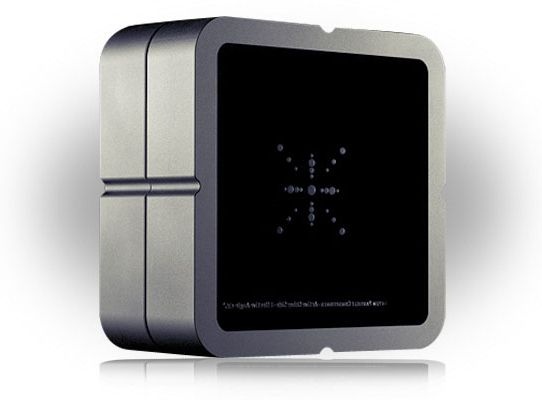
 When I first heard of the Blackbody Ambient Field Conditioner, the newest product to hail from LessLoss Audio, I admit I was skeptical. Some years ago, I had the opportunity to audition LessLoss products at length in my home systems and found them impressive, particularly their Dynamic Filtering Power Cords (DFPCs) which are quite adept at quieting RFI/EMI induced noises. Our own Russell Lichter wrote at length on their products (
When I first heard of the Blackbody Ambient Field Conditioner, the newest product to hail from LessLoss Audio, I admit I was skeptical. Some years ago, I had the opportunity to audition LessLoss products at length in my home systems and found them impressive, particularly their Dynamic Filtering Power Cords (DFPCs) which are quite adept at quieting RFI/EMI induced noises. Our own Russell Lichter wrote at length on their products (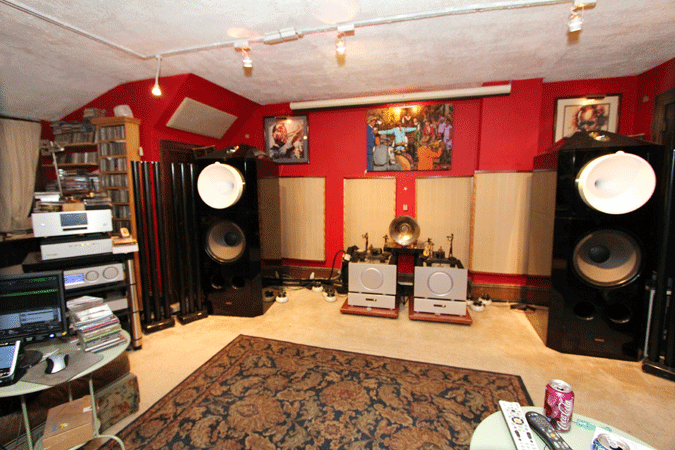
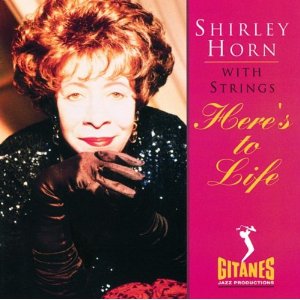 The first thing I did was find some music that I knew intimately and that would make it easy for me to discern even small differences—if any. That CD was Shirley Horn’s syrupy and soulful Here’s to Life. (And may I suggest that any one of you who do not own this CD go out and buy it—for an extraordinary recording of a jazz diva surrounded by a 50-piece orchestra with voluminous strings that appear to capture the very ebb and flow of her humanity—then for the luscious sound quality of the Verve label.) Simply put, this is one of the greatest CD’s of a jazz vocalist know of! In my book, it too will become a timeless treasure like Sinatra’s legendary Only the Lonely, Sarah Vaughn and Count Basie’s startling Send in the Clowns and Billie Holiday’s masterpiece Lady in Satin.
The first thing I did was find some music that I knew intimately and that would make it easy for me to discern even small differences—if any. That CD was Shirley Horn’s syrupy and soulful Here’s to Life. (And may I suggest that any one of you who do not own this CD go out and buy it—for an extraordinary recording of a jazz diva surrounded by a 50-piece orchestra with voluminous strings that appear to capture the very ebb and flow of her humanity—then for the luscious sound quality of the Verve label.) Simply put, this is one of the greatest CD’s of a jazz vocalist know of! In my book, it too will become a timeless treasure like Sinatra’s legendary Only the Lonely, Sarah Vaughn and Count Basie’s startling Send in the Clowns and Billie Holiday’s masterpiece Lady in Satin. 
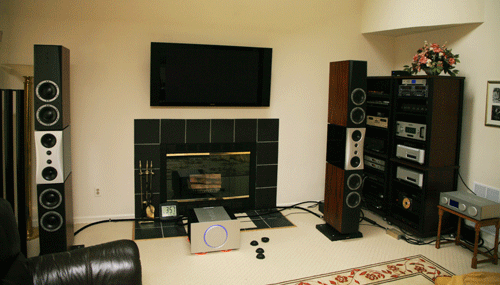
 As an avid audiophile without formal technical training I understand their information about this product to mean the electromagnetic radiation of our electronic audio gear creates a sort of hazy grunge that ultimately affects the signal, preventing the clean, clear information at our sources from getting to our speakers unimpeded, in my case, Dynaudio Temptations. The sound is not as crystalline as it could be without the Blackbodys(s) doing its “thing” adjacent to the components.
As an avid audiophile without formal technical training I understand their information about this product to mean the electromagnetic radiation of our electronic audio gear creates a sort of hazy grunge that ultimately affects the signal, preventing the clean, clear information at our sources from getting to our speakers unimpeded, in my case, Dynaudio Temptations. The sound is not as crystalline as it could be without the Blackbodys(s) doing its “thing” adjacent to the components. 
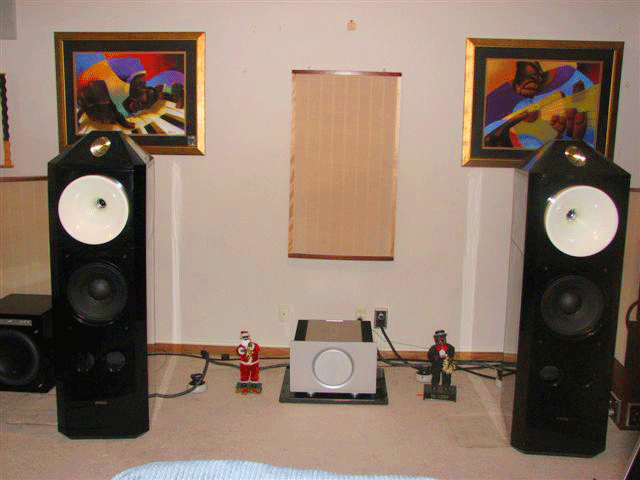




Be the first to comment on: Life with the LessLoss Blackbodys.